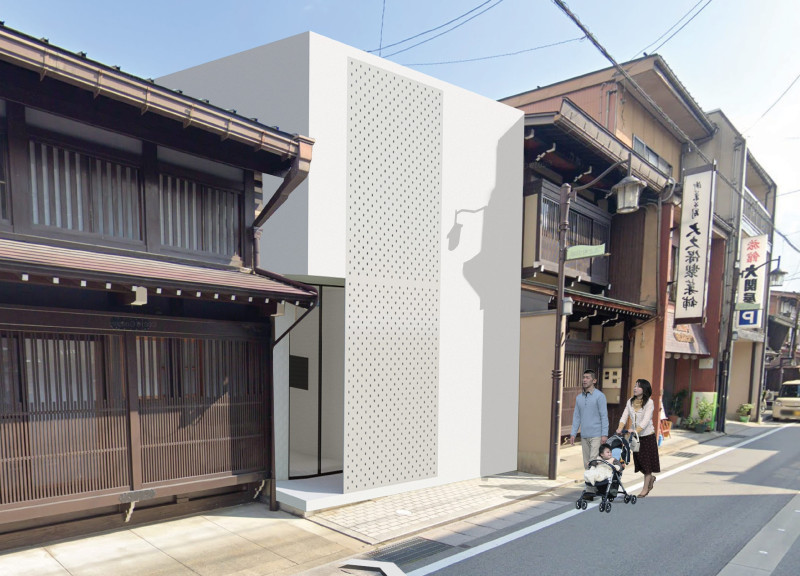5 key facts about this project
The Concealed Cube is located in Hida, Japan, where it seeks to provide a solution for the town's declining youth population. The design focuses on creating living spaces for young families that reflect a balance between modern needs and traditional Japanese culture. By merging these elements, the Concealed Cube presents a unique approach to housing that prioritizes privacy and tranquility while remaining connected to nature.
Concept and Design Intent
The design embraces minimalism, eliminating unnecessary features and focusing on what truly matters for a comfortable living experience. A private hot spring bath, known as onsen, is integrated into the layout, highlighting a traditional element. The use of a tatami configuration offers flexible living areas that adapt to the family's needs, creating an intimate atmosphere that invites relaxation.
Spatial Organization
Thoughtful layout defines the Concealed Cube. An exterior courtyard acts as a secluded spot for relaxation, allowing residents to step outside without exposure to the public. This space serves as a calming retreat, bridging the gap between the indoors and outdoors. Inside, the living area features an expandable sofa that can also serve as a bed for guests, showing an efficient use of space that is both practical and accommodating.
Materiality and Sustainability
Sustainable practices are important in the design. Bamboo fiber wall panels provide structural strength while being environmentally friendly. ThermaCork insulation, known for its energy-efficient properties, is employed to ensure consistent indoor temperatures. Lime plaster is used for its ability to control humidity effectively, which is essential for maintaining comfort in varying weather conditions.
Design Outcome
The design effectively combines traditional and modern styles to create a comfortable living environment. Large windows in the bedrooms allow natural light to fill the space, connecting the interior to the courtyard outside. This thoughtful design enhances the feeling of openness, allowing residents to enjoy both privacy and a strong relationship with their natural surroundings.






















































